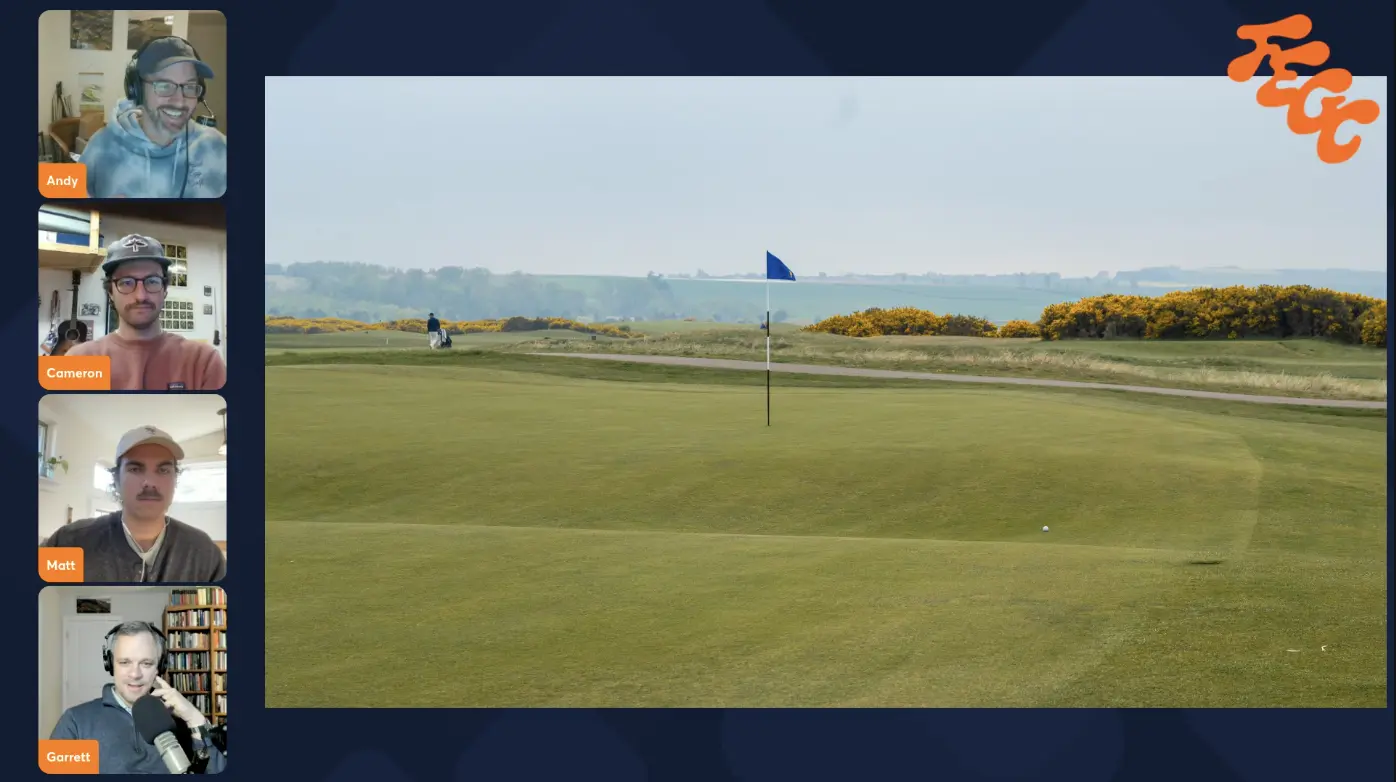What the Cabot Collection’s Investment in Lofoten Links Means for Both Sides
What the Lofoten Links move says about Cabot's current strategy and possible future plans


For the Friday edition of the Fried Egg Golf newsletter, Joseph LaMagna and Garrett Morrison convened an edition of Alternate Shot to discuss the Cabot Collection’s addition of Lofoten Links to its growing portfolio.
Joseph: Earlier this week, the Cabot Collection announced a “strategic investment” in Lofoten Links, marking it the latest of several recent additions to its golf course portfolio. Lofoten Links, situated on the Lofoten Islands in northern Norway, is a unique course that lies along the Norwegian Sea. Located within the Arctic Circle, the course is open for play from May to mid-October, during which visitors can experience the “Midnight Sun”—continuous daylight for 24 hours at certain times of the year. It is a highly regarded golf course, known for its stunning scenery, as you can see in this clip of Viktor Hovland’s visit to the course after the 2022 Open Championship.
Garrett, what was your first thought when this news came across your desk?
Garrett: My first thought was that a partnership with Lofoten Links (pronounced “luh-FOO-ten,” in case you were wondering) makes complete sense for Cabot.
For the past few years, under the leadership of founder and CEO Ben Cowan-Dewar, Cabot has been in expansion mode. Prior to 2020, the company operated just one resort, Cabot Cape Breton, which features two 18-hole courses. But as the pandemic dissipated and golf development surged, Cabot asserted itself as a major player in international golf development. Since late 2021, the company has purchased Cabot Citrus Farms in Florida, Cabot Highlands in Scotland, and Cabot Bordeaux in France. It has also started construction on new destinations in the Caribbean and eastern British Columbia. A remote, spectacular property like Lofoten Links fits seamlessly in this growing portfolio.
My second thought, which you didn’t ask for but I’ll give anyway, was that Lofoten Links is about to get upscaled.
At the preexisting golf facilities the company has acquired, it has employed a few different strategies, from total reconstruction (Cabot Citrus Farms) to the simple addition of a second course (Cabot Highlands). The outcomes at each site, however, have been similar: a finished Cabot resort generally offers multiple top-100-quality regulation golf courses, a short course or two, a variety of premium homes and rentals, and a modest array of non-golf amenities and activities. Cabot’s most important target customer is not the buddies-trip taker or the once-a-year golf adventurer. Rather, it’s the wealthy individual with the ability to work remotely and the means to buy a second—or third, or fourth, or whatever—residence in a unique and striking location. Cabot’s offerings are designed (and priced) to appeal to this demographic.
It’s possible that Cabot won’t move as aggressively at Lofoten Links as it has at Citrus Farms, Highlands, and other properties it owns outright. But according to Derek Duncan’s report in Golf Digest, the company intends to “round out” the Norwegian destination’s accommodations and amenities, “building a larger, permanent clubhouse and adding Cabot-level accommodations and dining.” I’d be surprised if a second 18-hole course weren’t at least a twinkle in Ben Cowan-Dewar’s eye.

Lofoten Links: not ugly (photos on this page via Cabot Collection press release)
Joseph: For better or for worse, isn’t this just following the natural life cycle of a successful product? I don’t know that this is a perfect analogy, but it feels a little bit like watching your favorite small-time musical artist rise to fame, and all of a sudden she’s playing arenas with tickets going for $298 after fees on TicketMaster. And you’re happy for them, but also it sure was nice to watch her perform at a small local bar for $16.
Or, in your mind, is there a better path for the future of this golf course—or courses in similar situations—to follow? What does the story of Lofoten Links suggest about the future of “hidden gems”?
Garrett: I didn’t mean to imply that I think Cabot’s investment in (and potential upscaling of) Lofoten Links is a bad thing. It might be just what the property needs to survive and thrive. I don’t have inside information about Lofoten’s finances, but I can’t imagine they’re amazing. We’re talking about a single, ultra-remote golf course with a six-month season. Without Cabot’s support, it probably wouldn’t be able to scale up enough to become a successful business.
I’d also point out that Lofoten Links has never really been a “hidden gem.” It’s ranked among the top 100 courses in the world by both Golf Digest and Golf Magazine, and it has always commanded a high green fee. So I wouldn’t expect Cabot’s involvement to change the identity of the place in any essential way, though Lofoten’s rates will certainly go up as it becomes a better-known and more attractive destination.
In general, though, you’re right to suggest that Cabot’s goal with its acquisitions is “premiumization.” The company finds promising properties that could use a capital infusion, improves their courses and facilities, and repositions them as high-end purveyors of golf and real estate. This playbook isn’t sinister in and of itself; it’s just a response to opportunity and demand. But as an industry trend (Cabot isn’t the only company specializing in premiumization), it can be disconcerting for price-conscious golfers.
One thing about Cabot I can’t nitpick, however, is its taste in golf courses. Lofoten Links looks incredible, as does Tom Doak’s in-progress design at Cabot Highlands. If you go premium, you’d better have a great product, and so far Cabot has cleared that bar with room to spare.
This piece originally appeared in the Fried Egg Golf newsletter. Subscribe for free and receive golf news and insight every Monday, Wednesday, and Friday.
Leave a comment or start a discussion
Engage in our content with thousands of other Fried Egg Golf Club Members
Engage in our content with thousands of other Fried Egg Golf Members
Get full access to exclusive benefits from Fried Egg Golf
- Member-only content
- Community discussions forums
- Member-only experiences and early access to events











Leave a comment or start a discussion
Lorem ipsum dolor sit amet, consectetur adipiscing elit. Suspendisse varius enim in eros elementum tristique. Duis cursus, mi quis viverra ornare, eros dolor interdum nulla, ut commodo diam libero vitae erat. Aenean faucibus nibh et justo cursus id rutrum lorem imperdiet. Nunc ut sem vitae risus tristique posuere. uis cursus, mi quis viverra ornare, eros dolor interdum nulla, ut commodo diam libero vitae erat. Aenean faucibus nibh et justo cursus id rutrum lorem imperdiet. Nunc ut sem vitae risus tristique posuere.